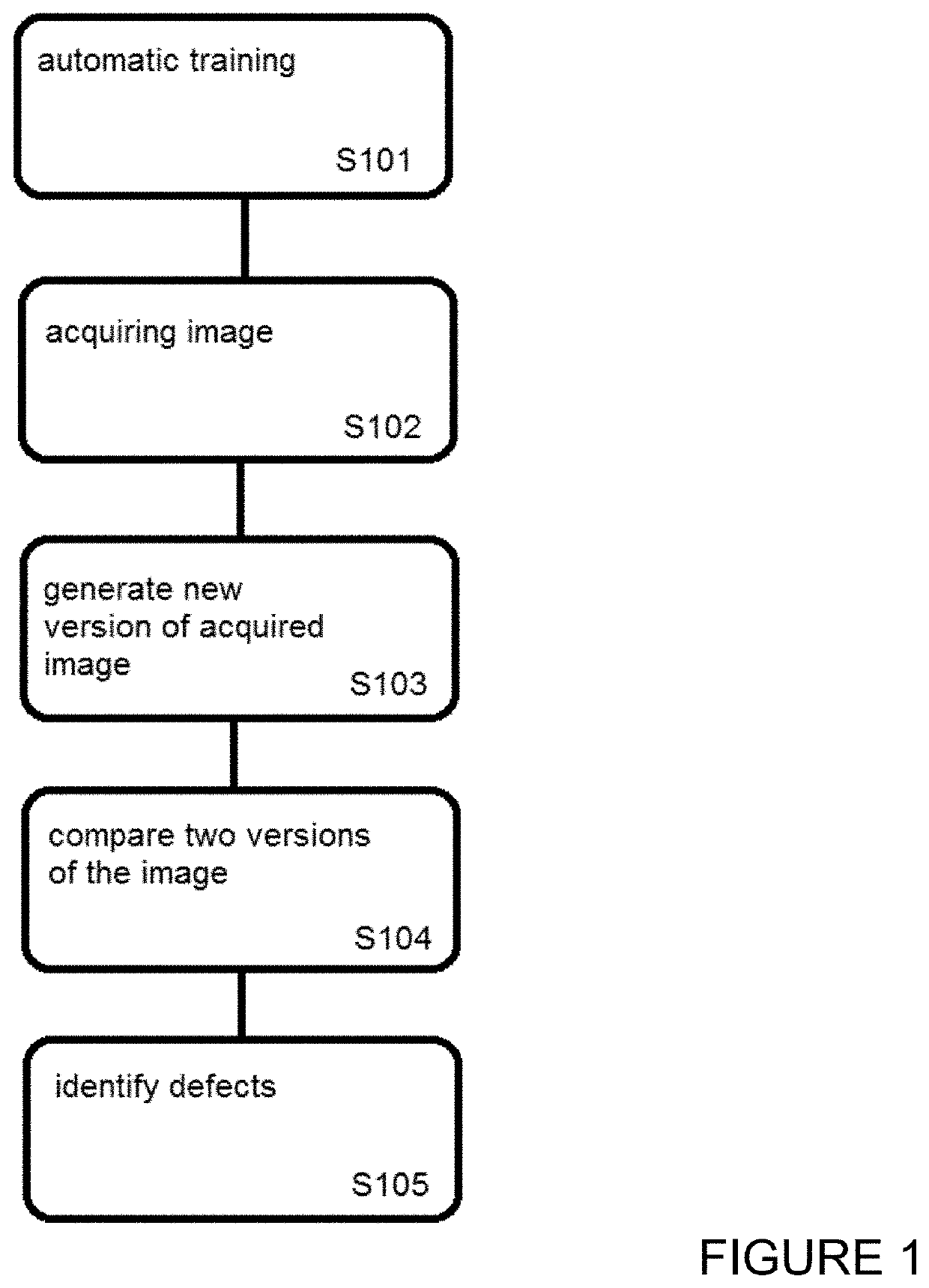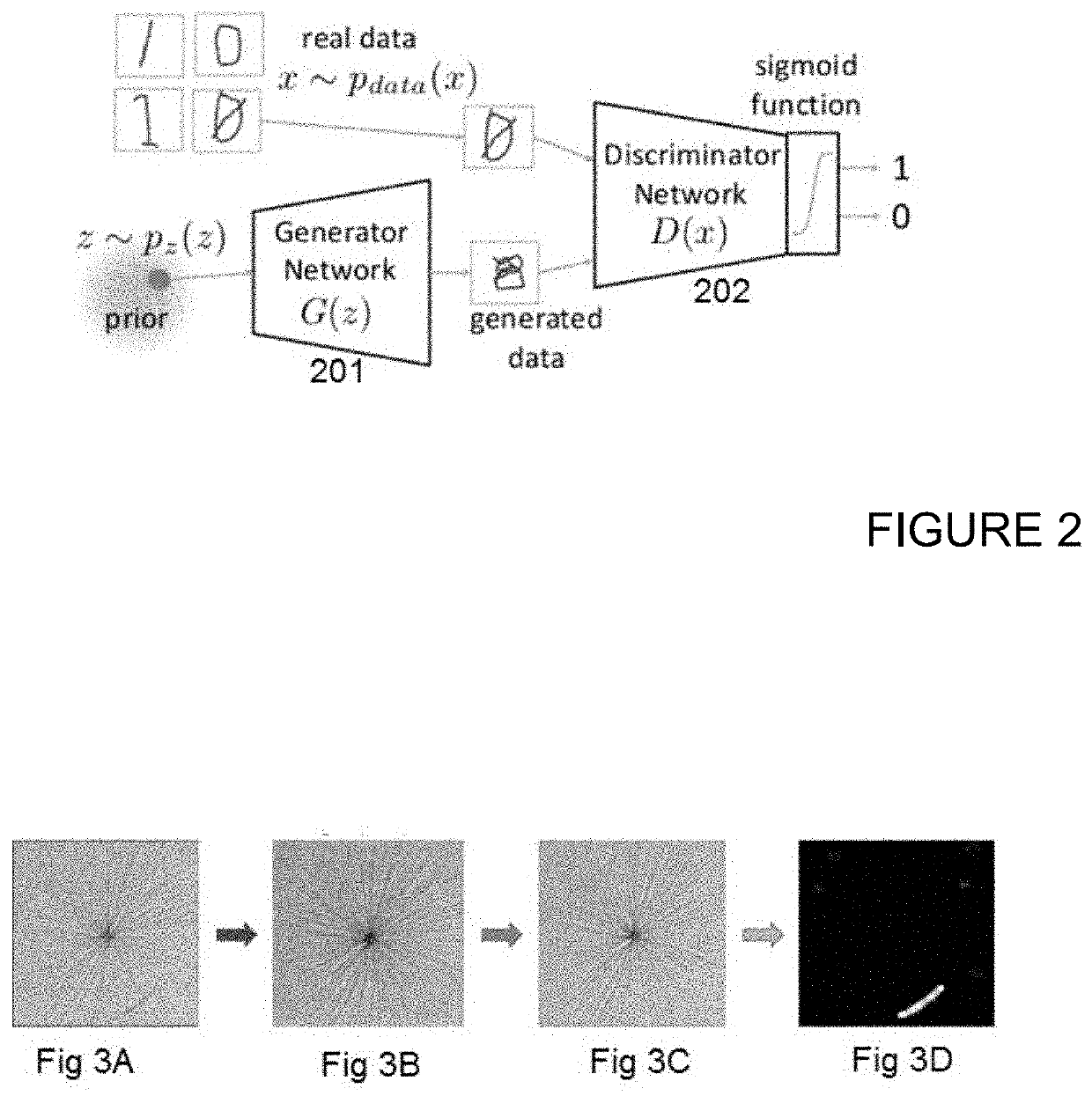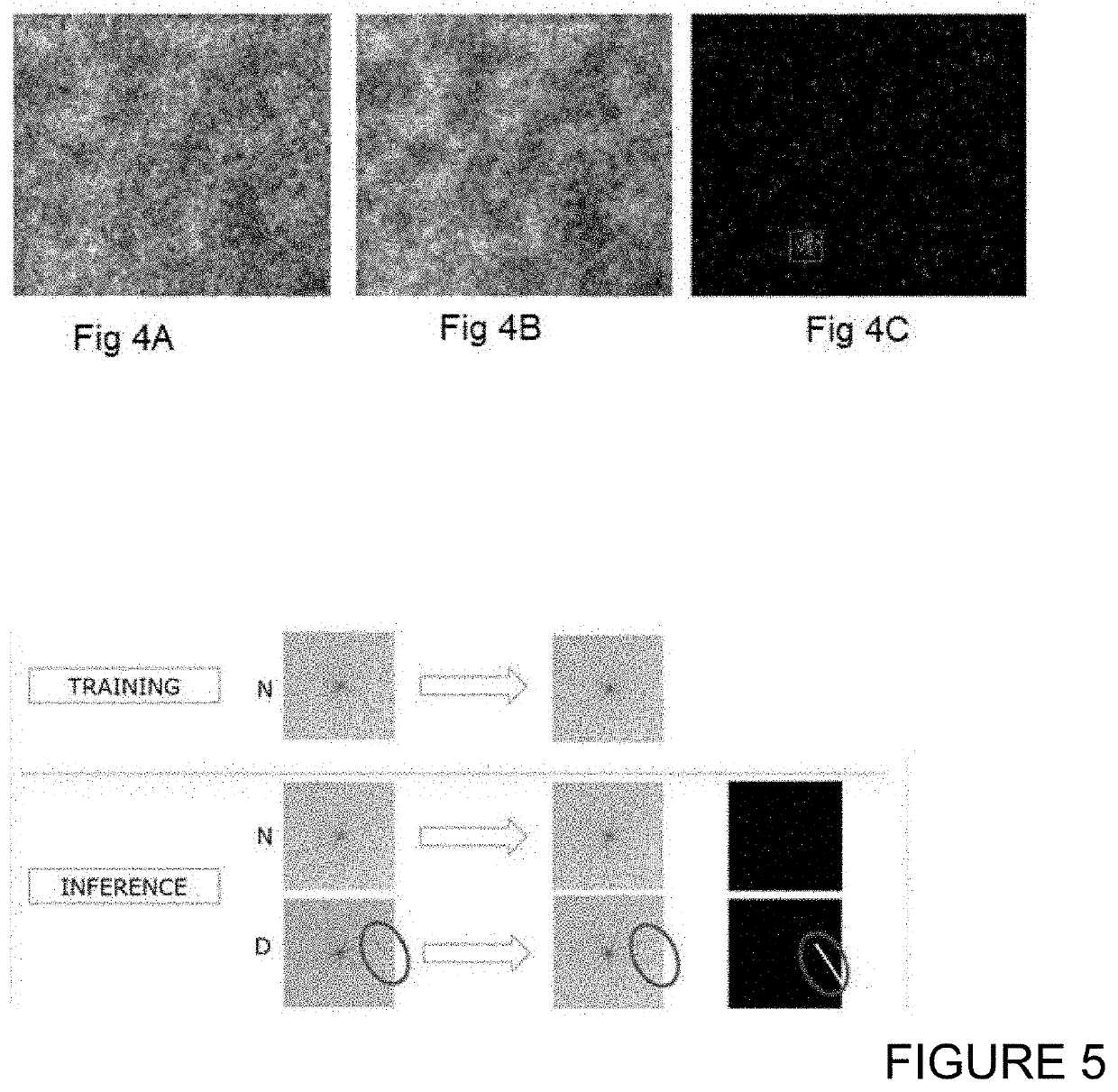Surface defect identification method and apparatus
- Summary
- Abstract
- Description
- Claims
- Application Information
AI Technical Summary
Benefits of technology
Problems solved by technology
Method used
Image
Examples
Embodiment Construction
[0061]FIG. 1 illustrates a method of an embodiment. The description of the embodiment is written, by way of example, from the broad perspective of a manufacturing environment, and the types of defects typically associated with that field. Embodiments are not limited to such implementation, and may be applied in any technical environment requiring identification of surface defects. For example, embodiments may be applied in any technical field in which there exists a desire to identify anything non-standard on the surface on a ‘material surface’. For example, material surface could include human tissue, surface of vegetation, fabric, infrastructure for inspection (turbine blades or bridges using drones, road surface using a vehicle mounted camera).
[0062]At step S101, an automated training of a neural network is performed. S101 may include automatically training a neural network to generate reduced-defect versions of input training images of material surfaces. Automatic in this contex...
PUM
 Login to View More
Login to View More Abstract
Description
Claims
Application Information
 Login to View More
Login to View More - R&D
- Intellectual Property
- Life Sciences
- Materials
- Tech Scout
- Unparalleled Data Quality
- Higher Quality Content
- 60% Fewer Hallucinations
Browse by: Latest US Patents, China's latest patents, Technical Efficacy Thesaurus, Application Domain, Technology Topic, Popular Technical Reports.
© 2025 PatSnap. All rights reserved.Legal|Privacy policy|Modern Slavery Act Transparency Statement|Sitemap|About US| Contact US: help@patsnap.com



